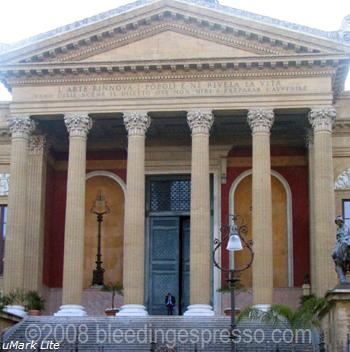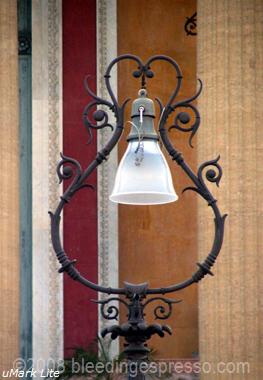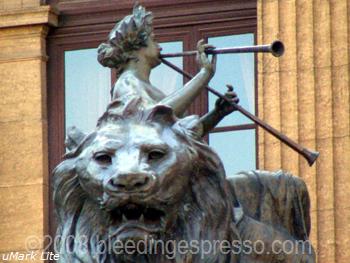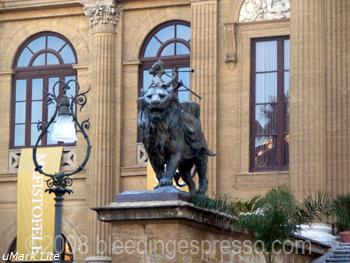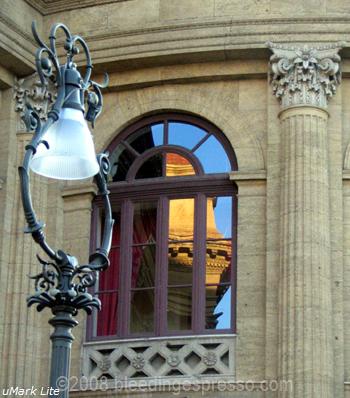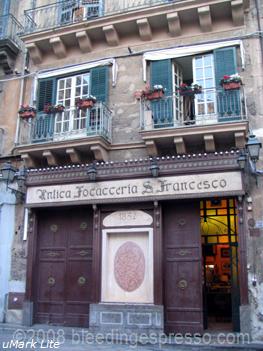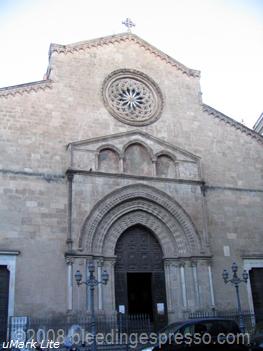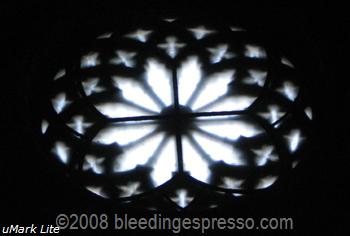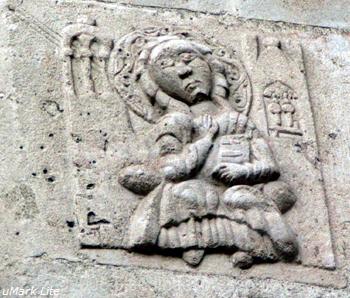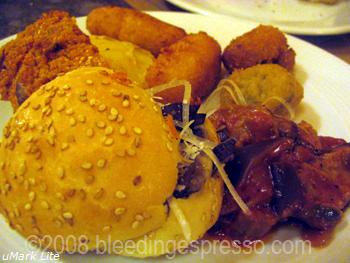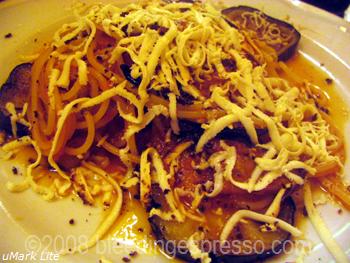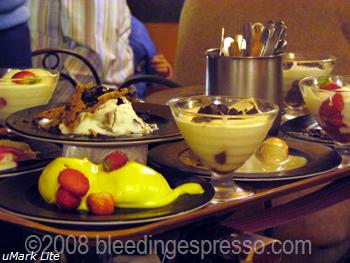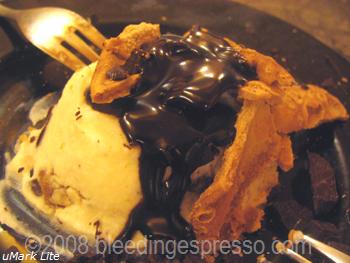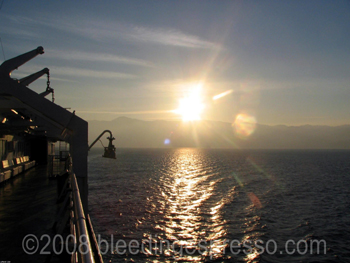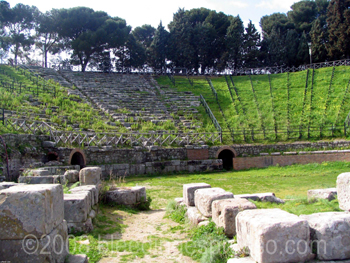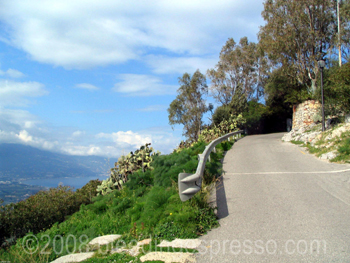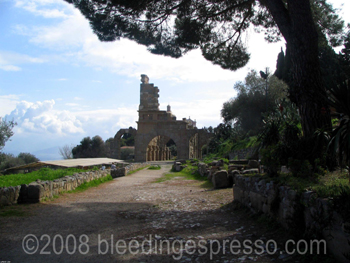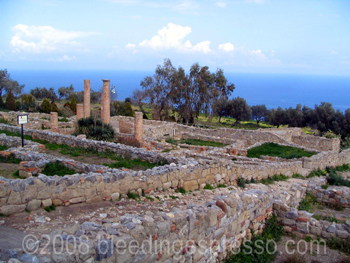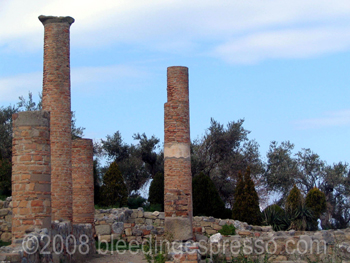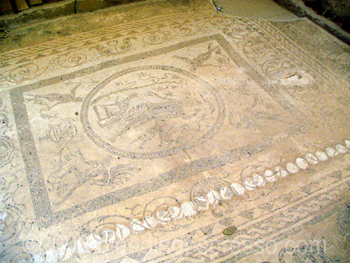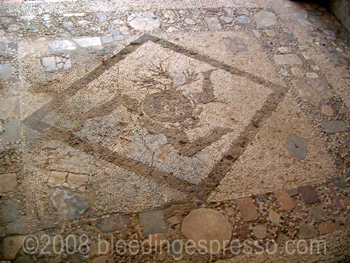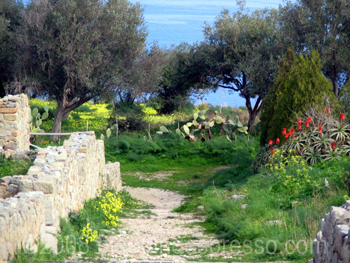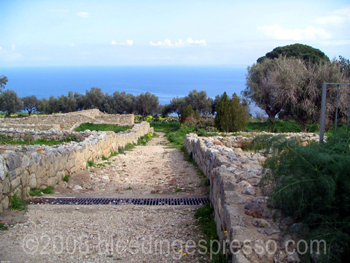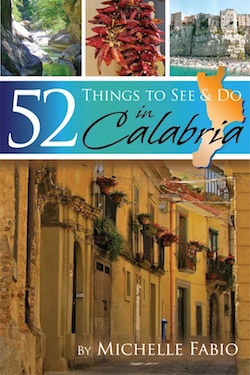Archive for the ‘sicily’ Category
Teatro Massimo in Palermo, Sicily
I loved Palermo so much I can’t possibly sum it all up in one, two, or even three posts. So for the next several Mondays, I’m going to share travel tales from Palermo . . .
Palermondays are here!
Now you may remember that before Cherrye and I set off for our trip to Sicily, I mentioned wanting to visit the Teatro Massimo in Palermo. Well we did!
This magnificent opera house opened in 1897 in part to provide national unity for the newly formed country of Italy; remember the Risorgimento and unification of Italy only occurred in the 19th century.
As the largest opera house in Italy and the third largest in all of Europe, Teatro Massimo Vittorio Emanuele seats 1,350 and features 7 tiers of boxes around an inclined stage, all in the shape of a horseshoe.
The opera house was built by the architect Giovanni Battista Filippo Basile, paying homage to classic Sicilian architecture; the exterior is reminiscent of the ancient Greek temples of Selinunte and Agrigento.
Take a virtual tour of Teatro Massimo here.
Don’t forget to come back next week for another Palermonday!
Antica Focacceria San Francesco in Palermo, Sicily
Please let’s ignore the fact that Berlusconi has fooled a majority of Italians into voting him into office a third time, OK? And also that my local party lost as well. Instead let’s move on to happier, comforting topics.
Like food.
You may be wondering where What’s Cooking Wednesday is this week. Don’t worry, it’s still going on at Shannon’s Tales from a Fairy Blogmother, but here at Bleeding Espresso, I’m shifting it to Friday when I’ll be posting my mom’s stuffing/filling/dressing recipe for La Buona Cucina Americana. Be sure to come back!
Keeping the food theme going, though, and finally getting back to my trip to Sicily, I’m going to tell you about one of Palermo’s most famous spots, the Antica Focacceria San Francesco:
The Focacceria is located on a tiny street opposite a small square anchored by the Chiesa di San Francesco d’Assisi:
See that design near the top of the church? Here’s a view from inside:
And here is some detail on the outside of the church (another here):
You can’t miss this place as you’ll probably wonder why a carabinieri car and two officers are outside. All. The. Time. Erin of The Olive Notes explains the phenomenon here. Hint: it involves something that rhymes with “The Bafia” but it’s probably not what you think, so do read Erin’s post.
The Antica Focacceria has been around since 1834 and is listed in all the guidebooks as one of *the* places you should visit in Palermo for traditional Sicilian food; luckily for Cherrye and me, our hotel was literally just around the corner–in fact, that’s where the hotel got our delicious morning pastries from.
On our first night in Palermo as we searched alto and basso for something, anything to eat before 7 p.m. (unsuccessfully), we decided against the Focacceria because (gasp!) the ala carte food looked old and crusty (I’m sure it was great at lunch though!), and also because we didn’t realize that we also had the choice of eating upstairs, which is more like a standard restaurant and overlooks the hustling bustling ala carte section below.
We made a fabulous decision to return to the restaurant section the following night, though, and were treated to an amazing dinner that cost us each under 20 euros, including a small carafe of house wine.
We started out by splitting the Sicilian sampler (as I like to call it):
Pane con milza (spleen sandwich, which yes I tried and actually liked in a small dose), sfincione (thick Sicilian pizza topped with an anchovy, tomato, spicy mixture), arancini (rice balls with various fillings), potato croquettes, pannelle (chickpea fritters), and caponata (eggplant, peppers, capers, veggie mix).
And then on to one of Sicily’s most famous dishes
made with eggplant and ricotta salata,
Pasta alla Norma:
And once we saw this dessert cart come to the next table:
We knew we’d have to get something. So we split this:
Which the waiter just pulled from the cart and gave to us–no wax doubles like in America!
This was basically an inside out cannolo drenched in chocolate syrup. *So* good, as was everything apart from the pasta, of all things, being a tad undercooked and a bit salty.
But overall, you definitely have to stop in the Antica Focacceria on a visit to Palermo.
Aside from tasty traditional Sicilian food, a fun atmosphere, cheerful service, and great prices, the portions were so big that we didn’t finish anything. Unfortunately since we were leaving Palermo by train the next morning, doggie bags were ill-advised (and yes, I would’ve asked even though they’re not the norm in Italy!).
Tragic, I know.
Antica Focacceria San Francesco
Via Paternostro, 58
90100 Palermo
091 32 02 64
The Legend of Fata Morgana
 You’re relaxing in the Strait of Messina between Calabria and Sicily, enjoying the perfectly still water and air.
You’re relaxing in the Strait of Messina between Calabria and Sicily, enjoying the perfectly still water and air.
All is right with the world, you think, as you sip the local red.
You gaze into the glistening water and suddenly you feel like you’re closer to the island of Sicily than you thought you were. Indeed, it looks like you could reach out and touch it!
Is this what a sun stroke feels like?
Have you enjoyed a bit too much vino?
The history of southern Italy goes back as far as civilization itself, and so do many of her superstitions (malocchio anyone?) and myths–including the famous legend of the Fata Morgana, the Fairy Morgan, half-sister of King Arthur.
The story goes that as Roger de Hauteville sat on the coast of our bella Calabria dreaming of a Norman conquering of Sicily, he caught a whiff of orange blossoms and heard celebratory music coming from the Tyrrhenian Sea.
A hermit (clearly breaking Hermit Code) informed Roger that the melodies arose from Sicily, where Saracens were dancing and partying as Christians suffered in slavery.
 Roger wanted to go over immediately, but he didn’t have ships to cross the Strait (and dang it, there was no ferry at the time). So he sat some more on the beach, as many of us do, wondering what to do next.
Roger wanted to go over immediately, but he didn’t have ships to cross the Strait (and dang it, there was no ferry at the time). So he sat some more on the beach, as many of us do, wondering what to do next.
Improvvisamente a fairy with a magical coach and seven white horses appeared before him and offered to transport him to the island.
Roger refused her help, which angered the Fairy Morgan. In retaliation, she threw three stones into the sea making Sicily appear achingly within the reach of Roger.
He stood his ground, though, and proclaimed that he didn’t need the help of some fairy to conquer Sicily–all he needed was the help of Jesus Christ!
The fairy and her illusions disappeared, and later on, Roger did get to Sicily with his own ships and conquered the island in the name of Jesus Christ.
Indeed, he is now known as Roger I of Sicily.
It is said that the image seen by Roger still appears off the coast of Reggio Calabria often on mornings following cold nights when there is calm, still air and water. The shore of Sicily appears reflected in and above the sea, with buildings lengthened and deformed, depicting a colorful, moving, magical city of Messina.
This meteorological (and some say mythical) mirage is knows as the Fata Morgana, and she patiently awaits your arrival. You have to buy the wine though.
Love Thursday: Love Notes on a Cactus
Last year at this time, some of you were disturbed when I posted Scribblings on a Seawall–love notes written in Catanzaro Lido. Yes, graffiti has a tendency to annoy me too.
Well hang on to your virtual hats.
Here’s another creative expression of love, on a cactus in the ruins of Tindari:
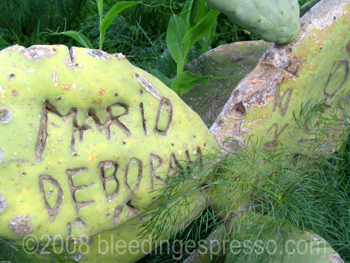 This cactus was *huge* and absolutely covered in love notes.
This cactus was *huge* and absolutely covered in love notes.
Disturbing, sure, (the poor cactus!) but it certainly made me think of my P waiting (impatiently) for me at home while my travel buddy and I vagabonded about . . . reminding me once again that love is all around.
Happy Love Thursday everyone!
The Ruins of Tindari, Sicily
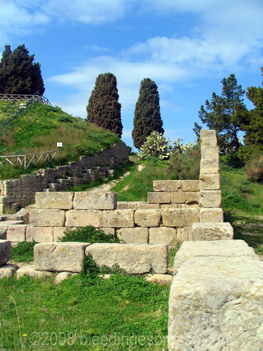 We’ve visited the Sanctuary of the Black Madonna in Tindari, and now it’s time to tour the ruins.
We’ve visited the Sanctuary of the Black Madonna in Tindari, and now it’s time to tour the ruins.
Tindari, ancient Tyndaris, is about 60 km from Messina and sits above the Tyrrhenian Sea with views of the Gulf of Patti and the Cape of Milazzo, a fabulous strategic position to control the waters between the Aeolian Islands and Messina back when there where pirates and whatnot.
Tyndaris was originally settled in 1500 B.C. but Dionysius I of Syracuse turned the settlement into a full-fledged Greek city in 396 B.C.
Tindari then came under control of the Romans in 254 B.C., after which most of the Greek infrastructure was modified or simply built over to accommodate the prospering city.
Other major events in the city’s history include an earthquake in 365 A.D., a landslide at the end of the 1st century A.D., and the construction of the Sanctuary of the Black Madonna sometime before the Saracens invaded the city in the 9th century.
By the 19th century, Tindari was abandoned, leaving behind only the Sanctuary and the ruins. Ready to see what’s left?
Here is the Greek amphitheater built in the 4th century B.C. and later modified by the Romans:
This once hosted some spectacular gladiator battles, but now it is home to the Tindari Estate (Summer) Festival. From late July through the third week of August, the old theater is full of life with poetry, music, dance, and play performances.
Incidentally, over the years, the theater was disassembled to make city walls, some of which are still in place; this is the walk up to the ruins with some of the old stones visible on the lower left:
The site also contains the remains of an old basilica that, again, was erected by the Greeks in the 4th century B.C. but has been modified over the years, and even partially restored quite recently.
And then there’s everything else–remains of baths, houses, schools, and other buildings.
And the mosaics–can’t forget the mosaics.
Here is the Sicilian symbol “Trinacria.”
There are also animal mosaics–a fabulous bull and goat if you’re interested.
The complex also houses an Antiquarium–a museum that stores some of the treasures found at the site:
Doesn’t he remind you of my muse, Leonardo?
I could’ve spent *much* more time here, absolutely enveloped in peace and calm. The natural surroundings here are just amazing:
Between the ruins, the Sanctuary of the Black Madonna, and the gorgeous scenery, Tindari is simply a must-stop if you’re traveling through this part of Sicily.
Bring a picnic lunch and allowing yourself plenty of time to daydream.
Check out my Sicily 2008 Flickr collection for lots more photos of Tindari!

